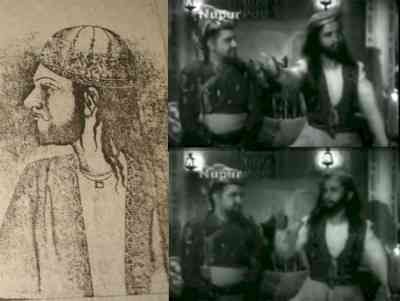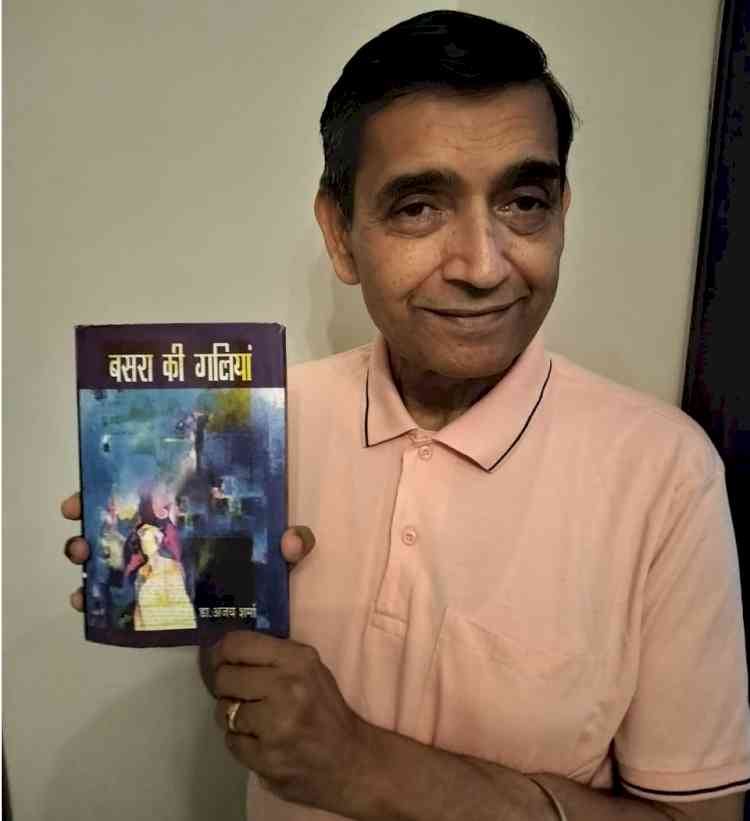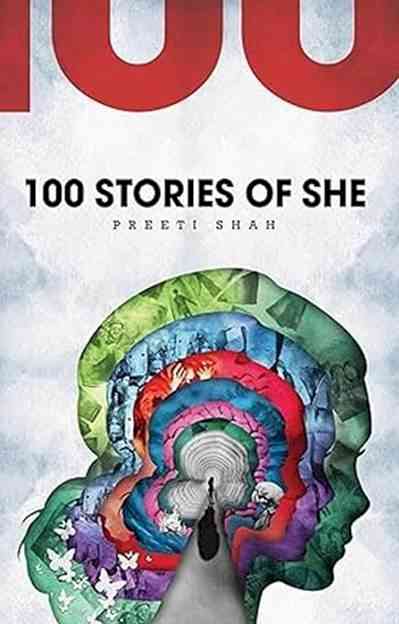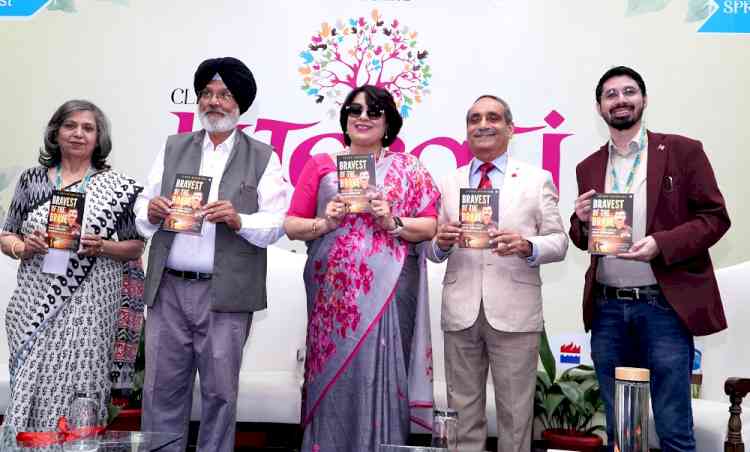Physician-poet and paladin of romance who floored Ghalib (IANS Column: Bazm-e-Ghazal)
One of the brighter stars in the galaxy of consummate poets in mid-18th century Delhi, he, with a moderately-sized diwan of ghazals and a handful of masnavis, could have seen his fame dim like many of his peers, but for one couplet that sent his more famous (eventually) contemporary Mirza Ghalib into raptures -- and regret.

One of the brighter stars in the galaxy of consummate poets in mid-18th century Delhi, he, with a moderately-sized diwan of ghazals and a handful of masnavis, could have seen his fame dim like many of his peers, but for one couplet that sent his more famous (eventually) contemporary Mirza Ghalib into raptures -- and regret.
As the story, possibly apocryphal or spontaneous hyperbole at the best, tells us, Ghalib was so awed by Momin's sher -- "Tum mere paas hote ho goya/Jab koi doosra nahi hota" -- that he expressed himself ready to forsake his entire work (so far) for the chance to fashion such a simple, yet profound couplet.
The episode may or may not be true, but it underscores how much value meaningful poetry commanded in that era. The couplet itself seems succinct, yet is imbued with multiple layers, as 'goya' can mean a way to address both yourself or a significant other, and the 'jab' (when) amplifies the nuance, thus, making at least two meanings possible.
And the sher - one of the most famous in the corpus of Urdu poetry - is perfectly placed in the ghazal which begins: "Asar usko zara nahi hota/Ranj rahat faza nahi hota". As this makes out, the focus seems on the indifference of the beloved, but the next couplet takes it further into pathos: "Tum hamare kisi tarah na huye/Varna duniya mein kya nahi hota".
Soon, comes this sher, and then, Momin goes on to declaim: "Haal-e-dil yaar ko likhun kyon kar/Haath dil se juda nahi hota".
As this ghazal -- and more of his oeuvre -- indicates, Momin's focus was love, very much profane and not sacred, and its travails, and his technique was a beguiling simplicity of expression, which, then, proved to have much more profound meaning.
And this came quite naturally for Momin Khan 'Momin' (1800-51/2) was described, by all his contemporaries and in all accounts, as of a exceedingly romantic disposition.
Born in Delhi in a family of Mughal 'hakeems' (Unani physicians) hailing originally from Kashmir, Momin "had an artistic and romantic temperament; he was always in handsome style and well-dressed. He was tall, of darkish complexion, with a head full of long curly locks that he constantly kept combing with his fingers," says Mohammad Hussain Azad, in "Ab-e-Hayaat", the first history of Urdu literature (as translated by Frances W. Pritchett and Shamsur Rahman Faruqi).
He can be seen in this guise in the celebrated film "Mirza Ghalib" (1954) in the court mushaira scene, where an unnamed actor plays him with verve, while reciting the same famous ghazal - though condensed to meet cinematic requirements.
But, Momin was far from being just another well-heeled, aristocratic fop, whiling away his time in romance and presenting his amours in poetry, in the twilight of Mughal rule, being a man of many parts.
A competent physician like his father and grandfather, he was also proficient in mathematics, geomancy, astrology, particularly divination by star-gazing, chess and music. Perhaps the last skill helps to explain the rhythmic cadence he easily achieved in some of his ghazals and how exquisitely they pair with music, when rendered by the likes of Begum Akhtar and Ghulam Ali.
On his poetry, Azad says Momin's "thoughts are extremely delicate, and his themes lofty. And the power of his metaphors and similes too lifts his ghazals to a high level. In them he has expressed romantic affairs with an extraordinary delightfulness".
Another trademark for Momin was delightfully and playfully juxtaposing his 'takhallus', which means believer' with a predilection for 'buts' (idols) and 'butkhaana' (temples) in the 'maqtas' (last sher) of his ghazals.
"Haye sanam! Haye sanam lab pe kyun/Khair hai Momin? Tumhe kya ho gaya?", "Chahta hoon main to masjid mein rahun Momin/Kya karun butkhaane ki jaanib khencha jata hai dil", "Momin na sahi bosa-e-pa sajda hi karenge/Woh but hai jo auron ka to apna bhi Khuda hai", but also "Allah re! Ghum rahi buton butkhaaana chhor kar/Momin chala hai Kaabe ko ek parsa ke saath."
Innovative use of words was another trademark. Take "Aisi ghazal kahi yeh ke jhukta hai sab ka sar/Momin ne is zameen ko masjid bana diya" -- 'zameen' here denotes both land and (poetic) metre.
Then, there is "Hai kuch to baat Momin jo chah gayi khushi/Kis but ko de diya dil? Kyun but se ban gaye ho" -- where he uses the word 'but' (idol) in both connotations of allure and silence.
Two of his romantic ghazals stand out the most. One of unrequited/unattainable love which goes: "Roya karenge aap bhi pahron isi tarah/Atka kahi jo aap ka dil bhi meri tarah". Couplets like "Na taab hijr mein hai na araam vasl mein/Kambakht dil ko chain nahi hai kisi tarah", and "Na jayen vaan bane hai na bin jaaye chain hai/Kya kijiye hamen to hai mushkil sabhi tarah" transcend time to sound quite reminiscent of modern-day Hindi film songs.
His best known, however, is the elegantly-phrased, bitter-sweet: "Woh jo ham mein tum mein qaraar tha tumhen yaad ho ke na yaad ho..", which, in evoking the spirit of love's emanation, enjoyment, and evaporation/ending, stands beside Hasrat Mohani's "Chupke chupke raat din ansu bahana yaad hai..."
But, unlike Hasrat, whose ghazal is like a reminiscence, Momin couches his piece in the form of a tender reproach to the former beloved: "Woh naye gile vo shikayaten wo maze maze ki hikayaten/Woh har ek baat pe ruuthna tumhen yaad ho ke na yaad ho" and "Kabhi baithe sab hain jo ru-ba-ru to ishaaraton hi se guftagu/Woh bayaan shauq ka baramala tumhen yaad ho ki na yaad ho".
And he ends: "Jise aap ginte the aashna, jise aap kehta the bawafa/Main wahi hoon Momin-e-mubtala, tumhen yaad ho ke na yaad ho."
Here, Momin is not just addressing the subject -- but posterity. Surely, we should hear his plea.
(Vikas Datta can be contacted at [email protected])


 IANS
IANS 










